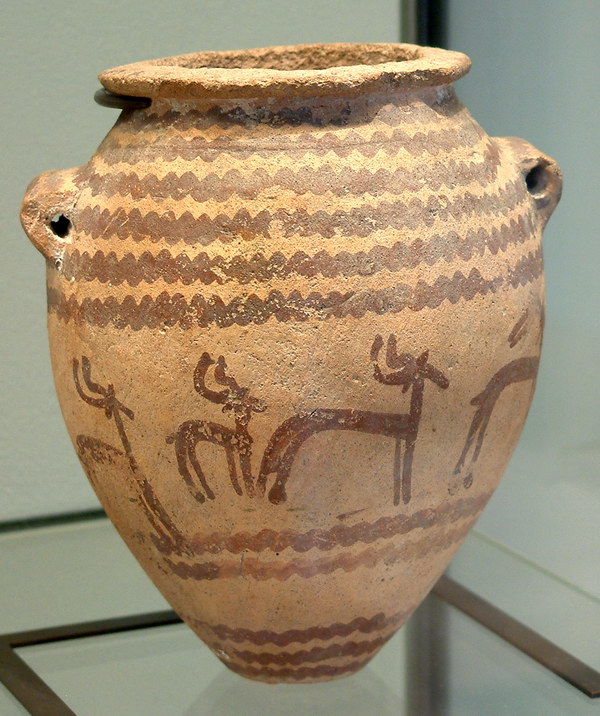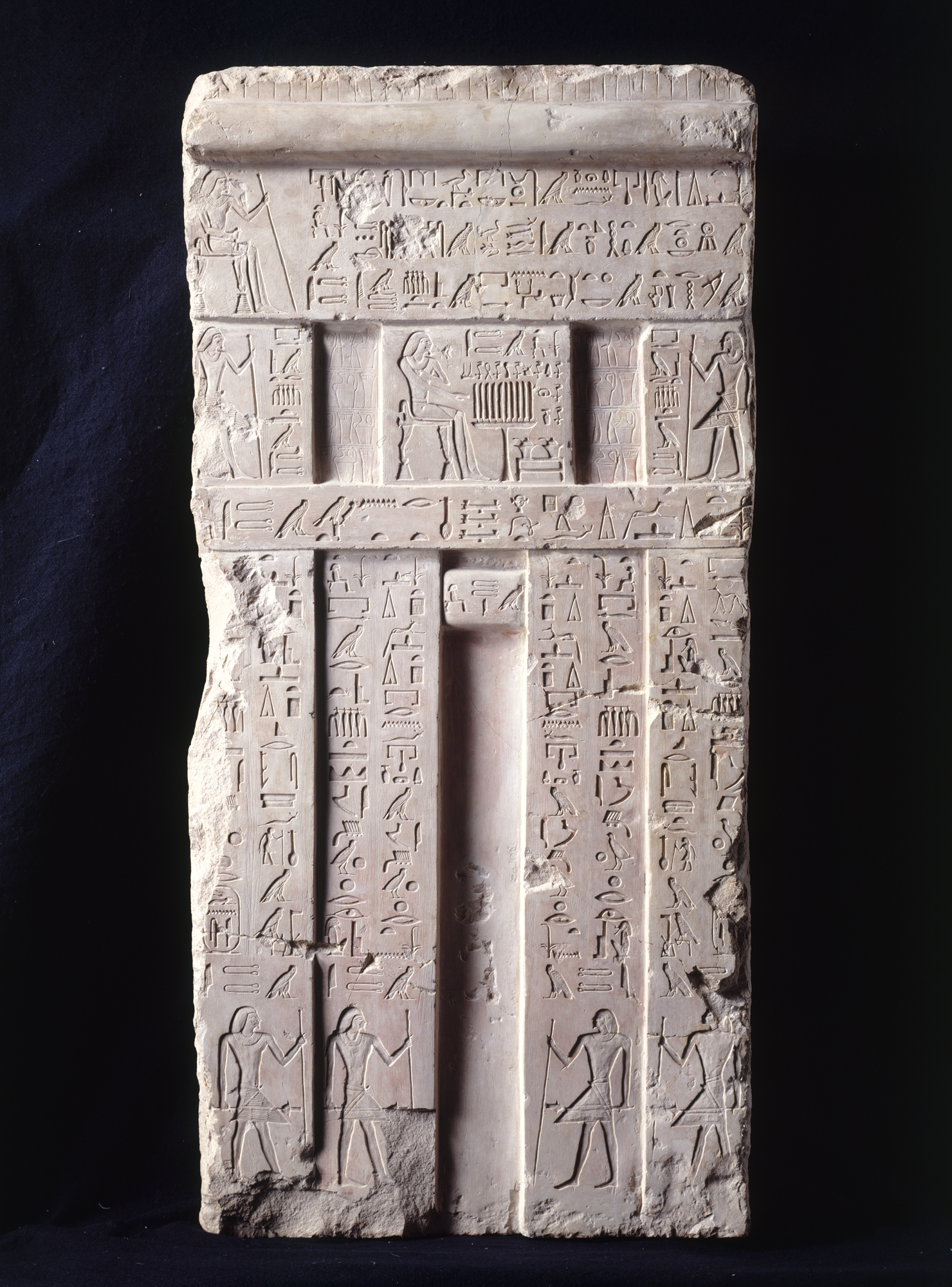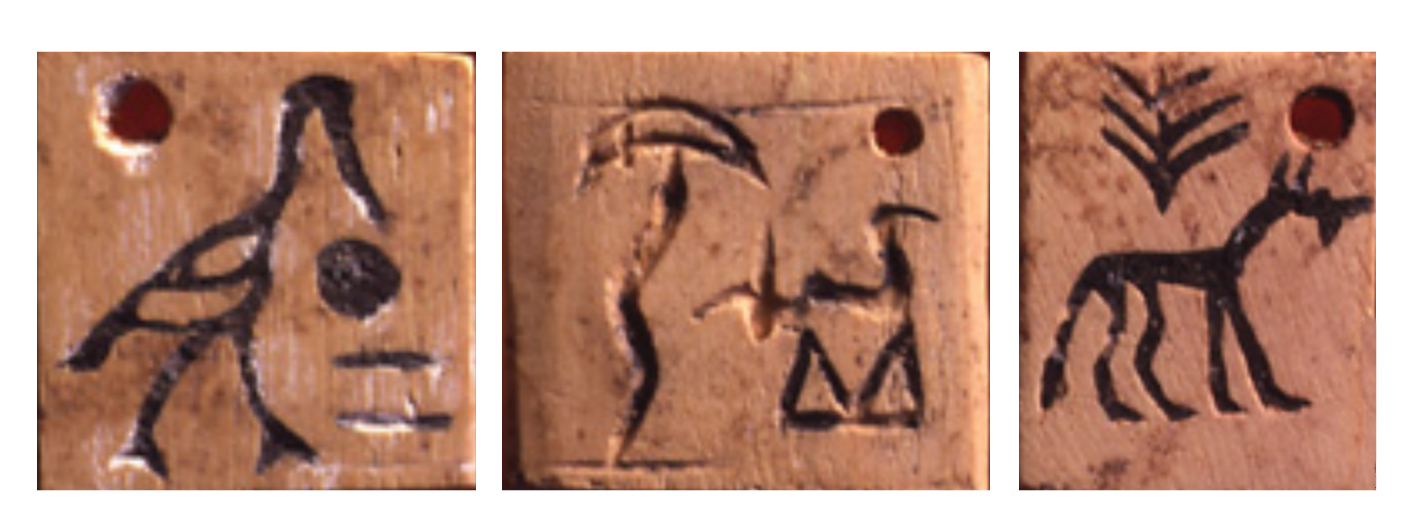|
Brazier (hieroglyph)
The ancient Egyptian Brazier hieroglyph is Gardiner sign listed no. Q7 for the ''cooking brazier''. It is shown from the Old Kingdom in the style of a vertical burning flame upon four feet, but the hieroglyph has the ''flame'' hiding the fourth foot. Another Gardiner unlisted form has the four feet, with no flame, and in a plan view. The brazier hieroglyph is used in Egyptian hieroglyphs as a determinative A determinative, also known as a taxogram or semagram, is an ideogram used to mark semantic categories of words in logographic scripts which helps to disambiguate interpretation. They have no direct counterpart in spoken language, though they ... for the 'brazier', or 'flame', or words related to 'cooking with a brazier', or a substitute.Betrò, 1995. ''Hieroglyphics: The Writings of Ancient Egypt'', ''"Brazier"'', p. 175. The brazier also has the Egyptian language value of 'kh-('ḫ). See also * List of hieroglyphs/Q, "Domestics and Funerary Furniture" from Gardiner ... [...More Info...] [...Related Items...] OR: [Wikipedia] [Google] [Baidu] |
Ancient Egypt
Ancient Egypt () was a cradle of civilization concentrated along the lower reaches of the Nile River in Northeast Africa. It emerged from prehistoric Egypt around 3150BC (according to conventional Egyptian chronology), when Upper and Lower Egypt were amalgamated by Menes, who is believed by the majority of List of Egyptologists, Egyptologists to have been the same person as Narmer. The history of ancient Egypt unfolded as a series of stable kingdoms interspersed by the "Periodization of ancient Egypt, Intermediate Periods" of relative instability. These stable kingdoms existed in one of three periods: the Old Kingdom of Egypt, Old Kingdom of the Early Bronze Age; the Middle Kingdom of Egypt, Middle Kingdom of the Middle Bronze Age; or the New Kingdom of Egypt, New Kingdom of the Late Bronze Age. The pinnacle of ancient Egyptian power was achieved during the New Kingdom, which extended its rule to much of Nubia and a considerable portion of the Levant. After this period, Egypt ... [...More Info...] [...Related Items...] OR: [Wikipedia] [Google] [Baidu] |
Old Kingdom
In ancient Egyptian history, the Old Kingdom is the period spanning –2200 BC. It is also known as the "Age of the Pyramids" or the "Age of the Pyramid Builders", as it encompasses the reigns of the great pyramid-builders of the Fourth Dynasty, such as King Sneferu, under whom the art of pyramid-building was perfected, and the kings Khufu, Khafre and Menkaure, who commissioned the construction of the pyramids at Giza. Egypt attained its first sustained peak of civilization during the Old Kingdom, the first of three so-called "Kingdom" periods (followed by the Middle Kingdom and New Kingdom), which mark the high points of civilization in the lower Nile Valley. The concept of an "Old Kingdom" as one of three "golden ages" was coined in 1845 by the German Egyptologist Baron von Bunsen, and its definition evolved significantly throughout the 19th and the 20th centuries. Not only was the last king of the Early Dynastic Period related to the first two kings of the Old Ki ... [...More Info...] [...Related Items...] OR: [Wikipedia] [Google] [Baidu] |
Brazier
A brazier () is a container used to burn charcoal or other solid fuel for cooking, heating or rituals. It often takes the form of a metal box or bowl with feet, but in some places it is made of terracotta. Its elevation helps circulate air, feeding oxygen to the fire. Braziers have been used since ancient times; the Nimrud brazier dates to at least 824 BC. History The word brazier is mentioned in the Bible. The Hebrew word for brazier is believed to be of Egyptian origin, suggesting that it was imported from Egypt. The lone reference to it in the Bible being the following verse: The king was sitting in the winter-house in the ninth month; and the brazier () was burning before him. Roman Emperor Jovian was poisoned by the fumes from a brazier in his tent in 364, ending the line of Constantine. In Arabic, the brazier is called ''kanoun''. Uses Heating Despite risks in burning charcoal on open fires, braziers were widely adopted for domestic heating, particularly and somewh ... [...More Info...] [...Related Items...] OR: [Wikipedia] [Google] [Baidu] |
Egyptian Hieroglyphs
Ancient Egyptian hieroglyphs ( ) were the formal writing system used in Ancient Egypt for writing the Egyptian language. Hieroglyphs combined Ideogram, ideographic, logographic, syllabic and alphabetic elements, with more than 1,000 distinct characters.In total, there were about 1,000 graphemes in use during the Old Kingdom period; this number decreased to 750–850 during the Middle Kingdom, but rose instead to around 5,000 signs during the Ptolemaic period. Antonio Loprieno, ''Ancient Egyptian: A Linguistic Introduction'' (Cambridge: Cambridge UP, 1995), p. 12. Cursive hieroglyphs were used for Ancient Egyptian literature, religious literature on papyrus and wood. The later hieratic and demotic (Egyptian), demotic Egyptian scripts were derived from hieroglyphic writing, as was the Proto-Sinaitic script that later evolved into the Phoenician alphabet. Egyptian hieroglyphs are the ultimate ancestor of the Phoenician alphabet, the first widely adopted phonetic writing system. Moreov ... [...More Info...] [...Related Items...] OR: [Wikipedia] [Google] [Baidu] |
Determinative
A determinative, also known as a taxogram or semagram, is an ideogram used to mark semantic categories of words in logographic scripts which helps to disambiguate interpretation. They have no direct counterpart in spoken language, though they may derive historically from glyphs for real words, and functionally they resemble classifiers in East Asian and sign languages. For example, Egyptian hieroglyphic determinatives include symbols for divinities, people, parts of the body, animals, plants, and books/abstract ideas, which helped in reading but were not pronounced. Cuneiform In cuneiform texts of Sumerian, Akkadian and Hittite languages, many nouns are preceded or followed by a Sumerian word acting as a determinative; this specifies that the associated word belongs to a particular semantic group.Edzard, 2003 These determinatives were not pronounced. In transliterations of Sumerian, the determinatives are written in superscript in upper case. Whether a given sign is a m ... [...More Info...] [...Related Items...] OR: [Wikipedia] [Google] [Baidu] |
List Of Hieroglyphs/Q
The total number of distinct Egyptian hieroglyphs increased over time from several hundred in the Middle Kingdom to several thousand during the Ptolemaic Kingdom. In 1928/1929 Alan Gardiner published an overview of hieroglyphs, Gardiner's sign list, the basic modern standard. It describes 763 signs in 26 categories (A–Z, roughly). Georg Möller compiled more extensive lists, organized by historical epoch (published posthumously in 1927 and 1936). In Unicode, the block ''Egyptian Hieroglyphs'' (2009) includes 1071 signs, organization based on Gardiner's list. As of 2016, there is a proposal by Michael Everson to extend the Unicode standard to comprise Möller's list. Subsets Notable subsets of hieroglyphs: * Determinatives * Uniliteral signs * Biliteral signs * Triliteral signs * Egyptian numerals Letter classification by Gardiner List of hieroglyphs See also *Egyptian hieroglyphs * Transliteration of Ancient Egyptian * Gardiner's sign list * List of cuneiform ... [...More Info...] [...Related Items...] OR: [Wikipedia] [Google] [Baidu] |
Brazier
A brazier () is a container used to burn charcoal or other solid fuel for cooking, heating or rituals. It often takes the form of a metal box or bowl with feet, but in some places it is made of terracotta. Its elevation helps circulate air, feeding oxygen to the fire. Braziers have been used since ancient times; the Nimrud brazier dates to at least 824 BC. History The word brazier is mentioned in the Bible. The Hebrew word for brazier is believed to be of Egyptian origin, suggesting that it was imported from Egypt. The lone reference to it in the Bible being the following verse: The king was sitting in the winter-house in the ninth month; and the brazier () was burning before him. Roman Emperor Jovian was poisoned by the fumes from a brazier in his tent in 364, ending the line of Constantine. In Arabic, the brazier is called ''kanoun''. Uses Heating Despite risks in burning charcoal on open fires, braziers were widely adopted for domestic heating, particularly and somewh ... [...More Info...] [...Related Items...] OR: [Wikipedia] [Google] [Baidu] |
Lake Of Fire
The lake of fire is a concept that appears in both the ancient Egyptian religion, ancient Egyptian and Christianity, Christian religions. In ancient Egypt, it appears as an obstacle on the journey through the underworld which can destroy or refresh the deceased. In Christianity, it is a concept of afterlife, after-death punishment of the wicked. The phrase is used in five verses of the Book of Revelation. In the biblical context, the concept seems similar to the Jewish Gehenna. The image of the lake of fire was taken up by the early Christian Hippolytus of Rome in about the year 230 and has continued to be used by modern Christians. Ancient Egyptian religion Fiery rivers and lakes in the underworld are mentioned in works such as the Coffin Texts and the Egyptian ''Book of the Dead''. Around their edges sit flaming braziers or baboons. Ra would pass through this lake on his journey through the Duat, renewing his boat. Chapter 126 of the Egyptian ''Book of the Dead'' is associated w ... [...More Info...] [...Related Items...] OR: [Wikipedia] [Google] [Baidu] |
The Writings Of Ancient Egypt
''The'' is a grammatical article in English, denoting nouns that are already or about to be mentioned, under discussion, implied or otherwise presumed familiar to listeners, readers, or speakers. It is the definite article in English. ''The'' is the most frequently used word in the English language; studies and analyses of texts have found it to account for seven percent of all printed English-language words. It is derived from gendered articles in Old English which combined in Middle English and now has a single form used with nouns of any gender. The word can be used with both singular and plural nouns, and with a noun that starts with any letter. This is different from many other languages, which have different forms of the definite article for different genders or numbers. Pronunciation In most dialects, "the" is pronounced as (with the voiced dental fricative followed by a schwa) when followed by a consonant sound, and as (homophone of the archaic pronoun ''thee' ... [...More Info...] [...Related Items...] OR: [Wikipedia] [Google] [Baidu] |



